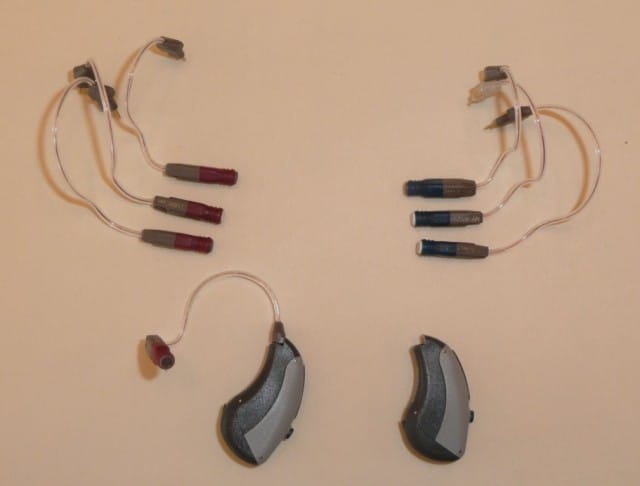 HHTM readers: The last post from Dr. Marincovich was the first of the concussion blogs. Today’s post is the second part of this awareness campaign.
HHTM readers: The last post from Dr. Marincovich was the first of the concussion blogs. Today’s post is the second part of this awareness campaign.
Dr. Peter Marincovich earned his graduate degree in communicative disorders from Louisiana State University, and his Ph.D. in Audiology from the University of Memphis. A Santa Rosa native, Dr. Marincovich has practiced in his hometown since 1984. Dr. Marincovich works with patients of all ages and levels of hearing loss. He is also a frequent presenter at seminars and academic conferences. His areas of special interest include the assessment of auditory and vestibular disorders, healthcare policy, hearing care solutions and delivery systems and audiology education. He holds specialized credentials in teaching the handicapped, and conducts courses at Santa Rosa Junior College.
Knowing the Signs and Symptoms Linked to Traumatic Brain Injury (TBI) Can Save Lives
By Dr. Peter Marincovich, Ph.D.
As discussed in part 1, Traumatic Brain Injury (TBI) — and even milder forms of TBI – is considered to be a leading cause of concussion and a fast growing concern among amateur and professional athletes where an increasing number of cases are being reported. If left untreated, TBI can result in cognitive impairment, hearing loss, as well as permanent injury and even death.1 Most recently, it was reported that an inmate at Bronx Central Booking was “punched, smacked and/or otherwise struck in the head and back”. The suit contends that Mr. Aquino felt a sharp pain in or near his ear and a change in his hearing. “Over the next few days, he developed a discharge from his left ear”. Subsequently he was found by an audiologist to have suffered a hearing loss and was prescribed hearing aids for both ears.
While some symptoms may not seem alarming or a cause of concern and could be viewed as signs of other maladies, singularly or in combination they can cause serious brain damage. Knowing how TBI manifests itself can help you, and those you know, cope with the after effects of a suspected concussion and prevent further debilitating or life-threatening complications.2
A list of warning signs that can help medical professionals identify TBI, or mild TBI, often includes: headache, dizziness, nausea or loss of consciousness, issues with memory, concentration and inability to recall information. Other cognitive deficits associated with TBI include impaired attention, disrupted judgment and thought, reduced processing speed, distractibility, and executive functioning deficits, such as issues with abstract reasoning, planning, problem solving, and multitasking.3
Memory loss and metabolic dysfunction are the most common cognitive impairments and may be associated with deficits in understanding spoken or written language (auditory dysfunction).4
In the cases of mild TBI, these deficits may be subtle and difficult to detect with standard neuropsychological testing, but can be sufficient to interfere with activities of daily living, driving, work or school performance.
In my practice, I have seen patients report ringing in the ears, sensitivity to loud sounds, a sense of hearing loss, along with ears that felt full or plugged. Others report that sounds seem muffled, or that they are intolerant of loud noises (Hyperacusis5), or only have selective hearing within specific sound ranges (Misaphonia6), while still others report ringing in the ears (Tinnitus7).
In addition, some of my patients said that they “felt funny” for as long as a day or more after sustaining even a mild concussion. The first 24 to 48 hours after a mild TBI are particularly important because subdural hematoma, epidural hematoma, or excessive brain swelling (edema) are possible and can cause further damage. For this reason, doctors suggest watching a person for potential changes during the first two days following a concussion. Parents should observe children and coaches should watch players in the days after a suspected TBI. 8,9
Hearing problems can occur for a number of reasons, both mechanical and neurologic, particularly when the inner ear and or temporal lobes have been damaged. For example, external bleeding in the ear canal, middle ear damage, cochlear injury and/or temporal lobe lesions can cause auditory dysfunction.10
Next Steps
The first thing to do after you think you have sustained a concussion is to immediately seek medical attention.11 In addition to assessing auditory function, the overall TBI diagnosis is based on a combination of scores on several assessment scales, as well as by gathering other medical diagnostic information.
After a neurologic exam, including neuroimaging data, an audiology assessment incorporating hearing tests (for assessing hearing sensitivity to determine if hearing loss exists, assessing speech acuity both in quiet and with competing noise, evaluation of balance function, determining the presence and extent of tinnitus and providing an overall communication needs assessment) should be performed by an audiologist. In cases where hearing loss exists, appropriately and individually prescribed, adapted, verified and validated hearing technology can provide a significant benefit.
Other integral parts of a comprehensive evaluation include: cognitive linguistic testing, memory attention naming, as well as listening comprehension and visual perception skills testing (imaging and observation).12
Emerging Research
Emerging areas of research continue to seek and develop better ways to assess TBI. Studies of the effects of multiple concussions on cognitive function and symptom presentation have had mixed results. In some studies, the number and severity of concussion symptoms has been found to increase in athletes with a history of two or more concussions.13
The most commonly observed neurocognitive impairments have been seen in the areas of memory and processing speed. A majority of these patients have benefited from a combination of interventional and multidisciplinary processes.14
Communicating with a Suspected TBI Victim
If someone is suspected of having a TBI incident, when communicating, get his or her attention while speaking at a normal rate – but not too quickly. Be specific with questions and allow the person time for self-expression. Provide spoken and written instructions and directions when appropriate, and communicate using both visual and auditory methods but ask and wait for the person to accept your offer of assistance
It is often better to use short sentences and repeat them when necessary. And always remember to allow time for the individual to comprehend, while continuing to be patient, flexible and supportive.15, 16, 17
Feature Image courtesy of HPT
References
- Cassidy, J.D., Carroll, L.J., Peloso, P.M., Borg, J., von Host, H., Holm, L., Kraus, J. and V.G. Coronado. (2004) Incidence, risk factors and prevention of mild traumatic brain injury: results of the WHO collaborating center task force on mild traumatic brain injury. J. Rehabilitative Medicine, Supplement 43: 28-60.
- Langlois, JA, Rulland-Brown, W, and Wald, MM (2006) The epidemiology and impact of traumatic brain injury: A brief overview. J. Head Trauma Rehabilitation. 21(5): 375-378
- Mayo Clinic. Traumatic brain injury: symptoms.
- Brain Injury Resource Center. Memory loss and metabolic dysfunction after Traumatic brain injury and/or a concussion.
- Patient Health Information, 2016. “Hyperacusis: An Increased Sensitivity to Everyday Sounds,” A public health information document, published online. American Academy of Otolaryngology-Head and Neck Surgery.
- Cavanna, AE, Stefano, S, 2015. “Misophonia: current perspectives,” Authors, in the Journal of Neuropsychiatric Disorder Treatment, 2015; 11; 2117-2123.
- Mayo Clinic. Patient Care and Health Information, 2016. “Tinnitus: Symptoms and causes,” A public health information document, published online.
- Rocchio, C. 1998, Unexpected medical problems can surface after brain injury. Family news and views, Volume 5, No. 6, October 1998. published online. Trial Lawyers Justice.
- Barton, L. Closely observing TBI victim for first 24-48 hours. Brainline.org.
- Lanska, DJ. Inner ear concussion. published online. Neurology Medlink.
- TBI and Concussion: Signs and Symptoms and Help. published online. Brain Health Education Research Institute.
- Assessment of mild traumatic brain injury: diagnostic protocol. published online. Centre for Neuro Skills.
- Graham, R. (2014). Consequences of repetitive Head Impacts and Multiple Concussions. The National Center for Biotechnology Information.
- Chen, AJ-W & Novakovic-Agopian, T. (2012) Interventions to improve cognitive functioning after TBI. In Tsao (JW (ed). Traumatic Brain Injury: A Clinician’s Guide to Diagnosis, Management, and Rehabilitation. Springer Science: 273-312.
- Chiasson, CR. Traumatic Brain Injury (TBI): A primer for the Hearing Healthcare Practitioner. Hearing Review 22(8), 2015.
- Moss, K. Brain Injury and Associated Vision and Hearing Loss. Texas School for the Blind and the Visually Impaired (TSBVI). Texas Deaf-Blind Outreach, Summer 2002.
- Erez, AB et al. (2009) Executive functioning, awareness, and participation in daily life after mild traumatic brain injury: A preliminary study. American Journal of Occupational Therapy 63: 634-640.
Feature Image courtesy of HPT







